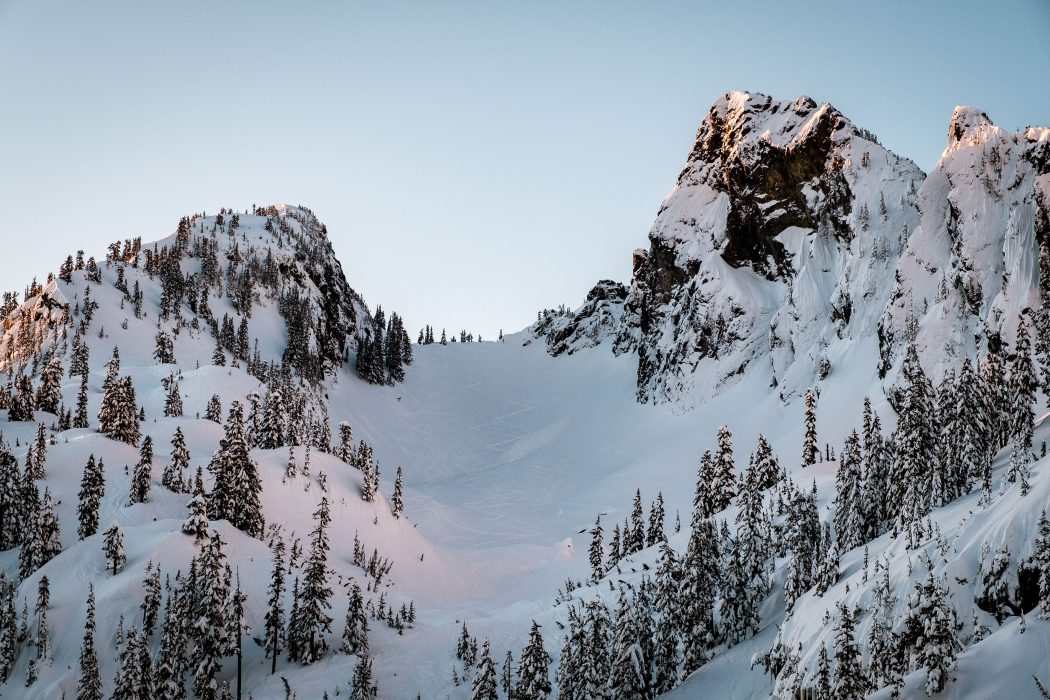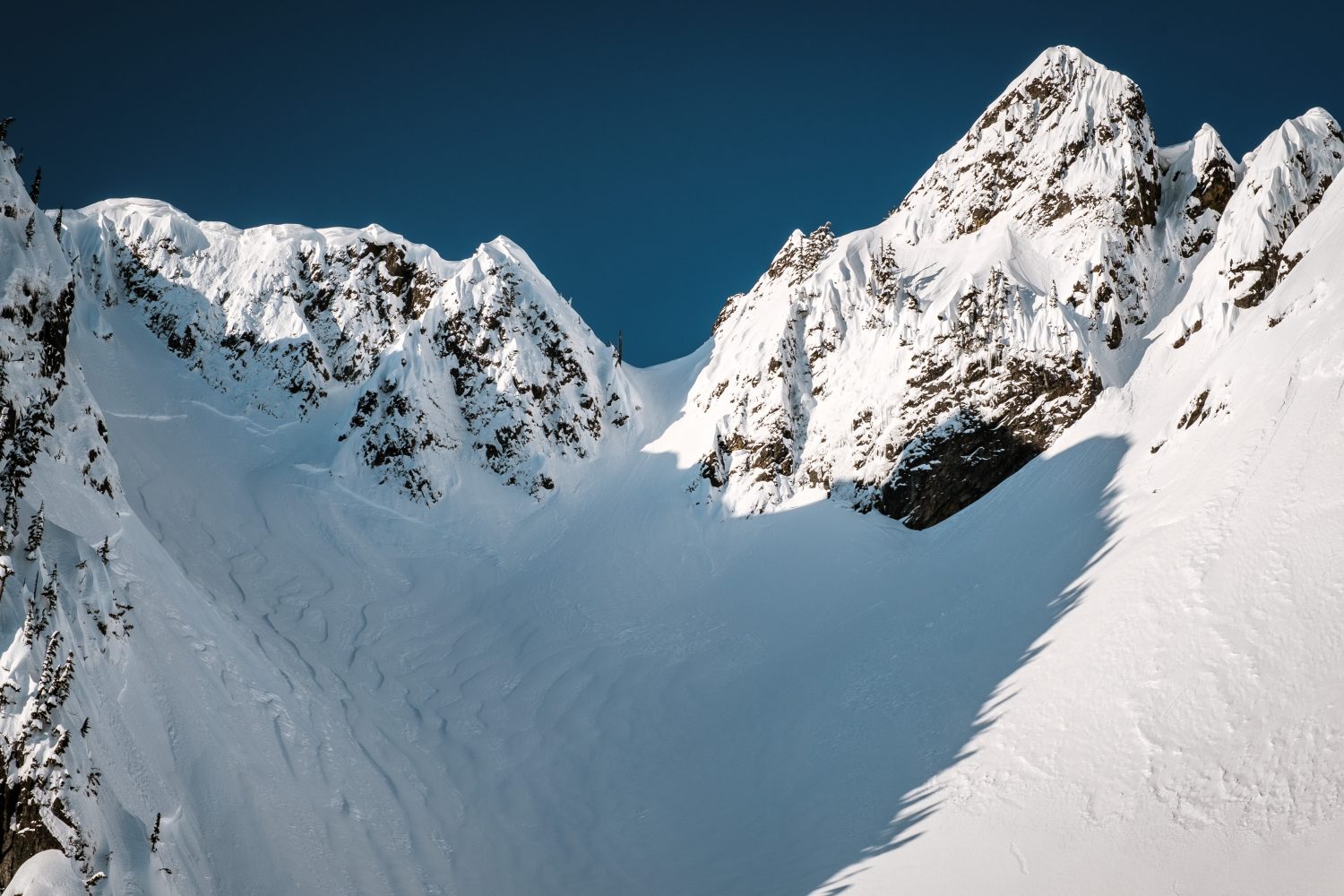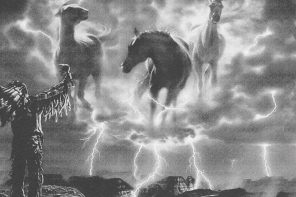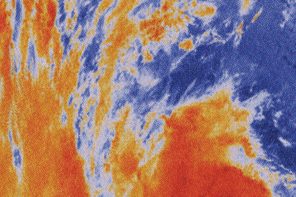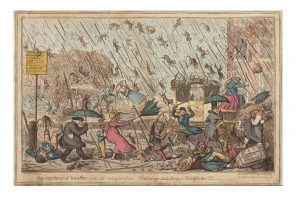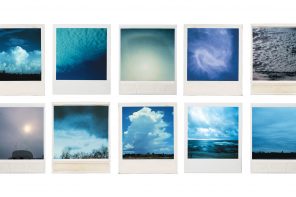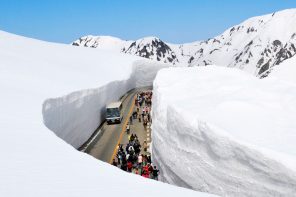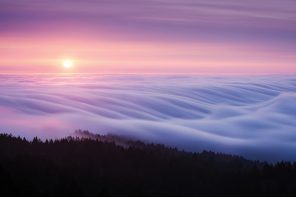A look back with Scott Schell, Executive Director of NWAC
It’s no secret that running to the mountains became a popular way to escape the confines of quarantine this winter. Resorts across the U.S. have the record season ticket sales to prove it. If you’ve been lucky enough to get up on your local hill this year, you’ve noticed the numbers of people in lift lines and on the mountain has drastically increased from previous years, even while most resorts are limiting capacity with reservation systems. At ski hills like my home mountain Mt. Baker, the crowds have driven more and more people into the backcountry, and away from the highly trafficked resort skiing we all know and love. Even at a small family-run mountain like Baker, with ample butt-puckering terrain, once reliable sneaker lines and guaranteed powder stashes have become fewer and far between. This influx has driven many to destinations deeper in the backcountry (or sidecountry in many resorts where out-of-bounds areas are accessible from in-bounds ski lifts), and those numbers are growing. Mountain bike sales from the summer may have been a strong indicator of the upcoming demand boom in skiing. Before the holidays even hit in 2020, “backcountry ski sales were up 81 percent, backcountry snowboard sales were up 146 percent, and backcountry accessories category—including safety gear like beacons, shovels, probes, and climbing skins—was up 150 percent” from the 2019/2020 season according to Outside/NBC.
While it’s obviously great for the industry, it’s created a high level of unpredictability in the backcountry and for all those involved. The increased crowds in the resorts has led to a boom in backcountry travel, often pushing people further and further out, into uncertain and more dangerous terrain. This has resulted in one of the deadliest avalanche years on record in the U.S., and the season is still going.
We caught up with Scott Schell, Executive Director of NWAC, the PNW’s legendary avalanche forecast and monitoring group, on everything from how an avalanche occurs, to the psychological effects of the pandemic, and its influence on decision making in the backcountry. Simply put, they work hard to keep everybody enjoying the snow safe out there.
Bronson: Of course, there are a thousand different ways an avalanche can be triggered, but what are the basic parameters that may cause or trigger an avalanche?
Scott: Well, yeah that’s a great question. If you’re just thinking about an avalanche in general, versus an avalanche that a human is involved in, if you’re just looking at the avalanche phenomena, it’s usually where the snowpack has some sort of a stressor. A simple way to think about it is, the snowpack doesn’t respond well to sudden changes, so typically, natural events that would cause an avalanche to occur might be a lot of new snow, it might be a lot of new snow moved because of wind, it might rapidly increasing temperature, it could be the sun hitting a snowpack, so all of a sudden, really warm temperatures with the sun rays can get the snow to move. Those are the core, natural drivers of natural avalanche activity.
Then if you’re looking at human issues, there’s obviously control work that ski areas do, so you’ve got explosives and various other artificial triggers. But humans moving around in the snow make pretty good triggers, whether you’re a snow shoe-er, a climber, a snowmobiler, a skier, whatever, we consider humans moving triggers out there. And if there’s a nexus of unstable snow, avalanche terrain, and a human, that’s a solid recipe for an avalanche.
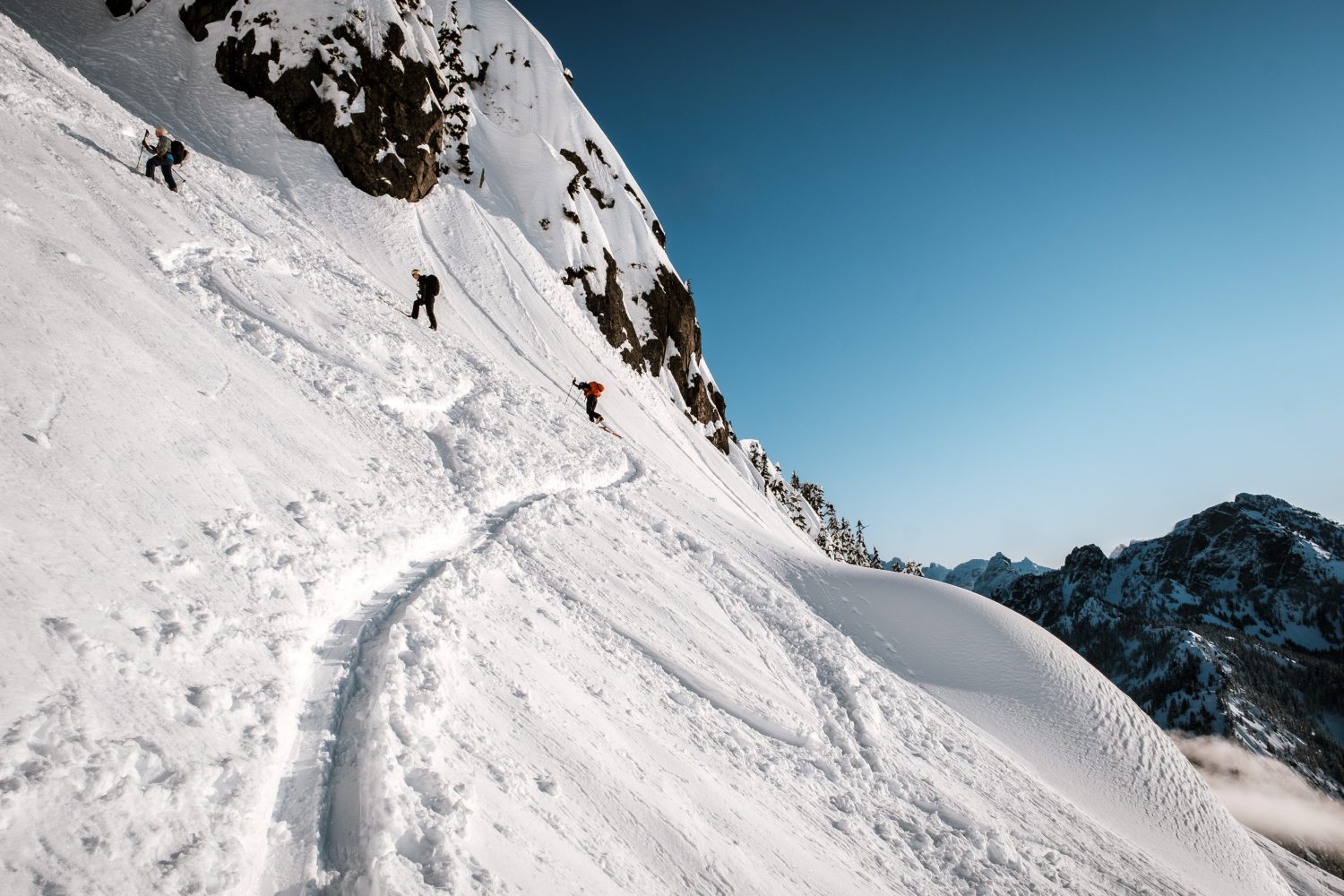
Bronson: Outside of even just the Covid-ness of the year, how has this year been unique for NWAC and avalanche reporting, particularly in Washington, but obviously it’s been a major issue across multiple western states.
Scott: There’s a lot of different metrics you could use, right? Well, did we have more avalanche warnings issued this year or what’s the actual snowpack, are we above average or below average? How does that change with the different zones forecast? Of course, another big metric that people would use is how many avalanche fatalities have you had? I can definitely say it seems like a more active year this year. I can also say that, for example, we had “extreme avalanche danger” warnings issued for the first time in five years. We don’t issue that danger rating very often, clearly five years, so it was kind of unique that we did that the other day, and I think the conditions warranted that. But it’s really hard to judge, seasonally, year over year, how things compare. But it’s been an active pattern, I’ll definitely tell you that.
Bronson: Say you issue an extreme warning, how long does that last? How long should people wait to get onto the backcountry?
Scott: In general, an avalanche forecast is issued for a particular period of time. In our case, it’s issued for a day, it expires at 6 p.m. So we would issue a forecast at 6 p.m. for the following day, at which point at 6 p.m., it expires. And an important piece, I think, to remember, is that avalanche centers like ours, once we begin forecasting, we issue a forecast every single day until mid-April. So we’re reliable in that regard, it’s just like getting your weather on your iPhone or whatever, when I click today, I’m going to be able to see what’s happening tomorrow.
And the important piece to understand is that the forecast that we’ve issued is good for that period of time, for that day, and then if they’re planning on going two days from now, that they need to make sure they’ve got the most current forecast. Because avalanche danger rises and falls, that rise and fall is often associated with a weather event, and so avalanche danger—avalanche conditions if you will—is very dynamic. Getting equipped with the most recent forecast is your best bet for managing those risks.
It’s really interesting, sometimes we can have exceptionally bad conditions, like an avalanche warning, where we’ve got high avalanche danger in all the zones, and in a couple of days, it can settle out and you can travel all over the place. And sometimes we can have an avalanche warning, and it can be treacherous for weeks or months. It’s just so important to always be checking every day before you’re heading out.
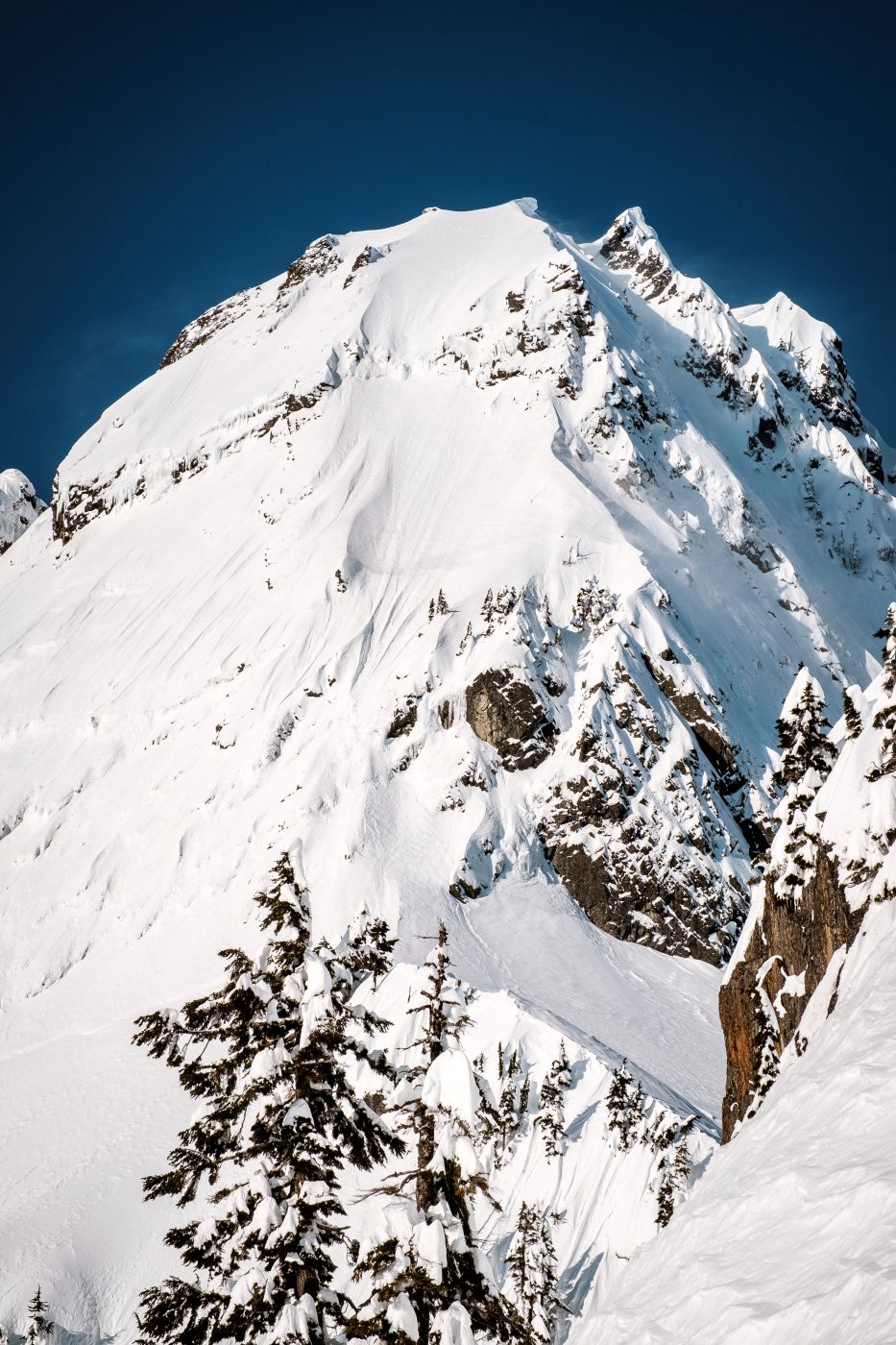
Bronson: I know you guys don’t really monitor this aspect, but have you been hearing or seeing with your observers out in the field, an increase overall of backcountry traffic?
Scott: Anecdotally, we know there’s significant growth. Significant. We’ve heard reports from the Washington State Parks that administers the snow park permits, that have seen a five times growth in snow park purchases this year. One of the other things that’s interesting, in essence, we’re flying blind overall, regarding numbers of people venturing into the backcountry; it’s just really a hard thing to capture that information.
The winter brings unique challenges to user data, the forest, most of the places that you would go and recreate, for example, Mount Baker, which is all Forest Service land. The Forest Service has a skeleton personnel in the winter, and the Forest Service is oftentimes trying to figure out how many people are getting out and recreating, and they do a much better job in the summer than they do in the winter. And then of course, there are just the environmental aspects, it’s cold and wet and instrumentation doesn’t work as well. But in general, we really have very little hard data on backcountry use, but as you’ve probably experienced, anecdotally, we know there’s just insane, there’s crazy growth this year.
Bronson: So let’s assume you are a proficient skier or snowboarder and you’ve done your AIARE 1—your first avalanche safety course. What are a couple of things you can do, including checking NWAC, or your local avalanche forecast, but what are some of what you recommend for people new to the backcountry?
Scott: Oh man, we could spend an hour or two on that. So if you’re assuming somebody’s already competent at moving around, and they’ve had, as you say, and avalanche course, and then, of course, one of the other pieces, which you’d learn in your avalanche course, but make sure that everybody has their avalanche safety equipment, every person in the group. Then for every day you’re going out, you’re checking the forecast. So we say, “Hey, get the forecast, get the gear, and get the training, those are the three things that you need to do every day that you’re out.” And that’s a really simple way to say this is what you need to think about.
Get the forecast, get the gear, and get the training, those are the three things that you need to do every day that you’re out.
I think one thing I might say to someone who’s done what you’ve already outlined, I think it’s important for people to understand that travel in the backcountry in avalanche terrain is really awesome and exhilarating; it’s also really dangerous and some experts have referred to the backcountry environment as a wicked learning environment, meaning that there’s not really crystal clear feedback. And one of the things I would recommend to most people is to think about it in terms of learning how to swim, and you can’t learn how to swim in a book. You can’t watch a YouTube video and learn how to swim, it doesn’t work. You can get some pretty solid pointers and you can conceptualize it, but getting into the backcountry and getting experience, confidence, isn’t going to happen from reading and watching videos, it’s going to happen from doing it. However, this is a sport in which, at this point, 32 people have already died this year in the US; it has significant risk.
So how do you get out there? And I think, a simple way that I’ve thought about it before is, you want to get into the shallow end of the pool, so you need to get out in the backcountry, ideally you’ll find some people that know more than you do, whether or not you want to call them mentors or friends or experts, or perhaps you’re hiring mountain guides, some combination of that. And you’ve got to get into the three-foot section of the pool, and you’ve got to play around and you’ve got to learn. And then as you’d learn in your avalanche class, you need to create a structured approach to growing experience, and one of the core ways of doing that is to have some sort of a structured debrief or recollection of your day. I think some people get intimidated by the word debrief, where they’re like, “Oh what do I need to do, to do that?”
Perhaps you made some really crappy decisions and you just happened to have a really healthy dose of luck that day.
But one of the things that’s worth mentioning is that when you go out and you go for a ski tour, and you ski around, and as most of us do every day we go out, we come back without a scratch on us, we didn’t trigger an avalanche. And it’s pretty natural then, this is how the basic human mindset works, you go out, you have a great day, you have fun with your friends, you come back, you drink a beer; you lived, you didn’t trigger an avalanche, and naturally you’re going to start thinking that you made pretty good decisions. And perhaps you did, but perhaps you made some really crappy decisions and you just happened to have a really healthy dose of luck that day. You were literally ten feet to the right of triggering that avalanche, but you’ll never know that.
And so what happens is you get this kind of negative feedback loop on backcountry travel. I see it as one of the biggest issues. If you go out and you ski in the backcountry 20 days that year and you’re building experiences, but is that experiencing actually benefiting you or is it creating really bad habits?
So the only time you really have verification or validation is once you’ve got avalanches happening. And so how do you, basically, get out into the three-foot part of the pool and experientially play around with backcountry skiing, and then slowly start to get into the deeper end? One way to try to do that quickly is through that structured debrief where there are some basic questions: where were we most at risk? What decision would we have done differently than we did today? Did we make bad decisions? What would we do if we did the same tour again now, knowing what we know, what might we have done differently? Would we have gone to a different area? And so you’re basically formalizing the look back. And that can be something you do solo or ideally, it’s something you’re doing with your partners.
Bronson: That’s a really interesting way to put it. If you don’t know and it starts to build that confirmation bias a little bit within you. I know a lot of friends who need to read that response.
BNo, totally, because it is a real issue and a lot of people say, you probably met really old, experienced travelers. Then you say, “Well what’s your secret ingredient?” And it’s like, “Intuition.” “I use intuition and that’s how I guide my decision-making process.” And really, if you take an academic look at intuition, it’s really subconscious pattern recognition, that’s what it is. And obviously, there are some really touchy, feely directions you can go with that definition, but it’s subconscious pattern recognition.
And how can you help curate your subconscious to make better decisions? You can interject at the end of your day and try to do a better job with this debrief, and a conversation about what it was that you did as a way to prime your brain’s ability to learn in an intuitive manner.
Because I think a lot of people never do that. They go skiing. Nothing happened. Then they’re on to the next day. And they’re gaining experience and intuition, but it might be in the wrong direction, like you said the negative biases. I think it’s a real issue, and I think that’s where also guides and mentorship can help. Ideally you could find a really good mentor that you respect and you can get along with and you could learn from and they could teach you some of these ways to get in there.
I think another thing that’s interesting to note is just because you’re a good skier, snowmobiler, climber, whatever; does not make you competent in the backcountry.
Bronson: One of my biggest takeaways in my first avvy course was really about communication and looking back on our tour. What we talked about earlier is it’s a little bit of getting out of your own ego and being comfortable with sharing that you were scared here or being comfortable sharing with others places you may have felt uncomfortable and learning from that in your debrief.
Scott: Yeah, I can’t count the number of times I’ve read accidents or incident reports in which there was someone who died and in the interview process with the survivors, someone in that survivor group made a comment, “I wish I had,” or “I wish I had said,” “I wish I’d spoken up,” “I didn’t feel right.” I’ve seen it time and time again, and it’s just so tragic. I just wish our culture was such that that was more acceptable to speak up.
Bronson: Yeah, exactly, going in the backcountry is a little bit of an experiment culturally and psychologically with yourself on opening up more.
Scott: Yeah, it’s probably pretty meta and nebulous all at once. Why do we go to the backcountry? I think to some of us, that is part of it, this complex environment in which you can start to learn how you think. I’ve always been more interested in going to the backcountry, being in the mountains, and moving in the mountains, more so than going to the mountains to slay powder. In fact, and many times, I feel more interested and motivated by the up-track than skiing.
Bronson: Scott, I appreciate you taking the time to speak with us here and appreciate you mostly doing what you do for NWAC, I know I’m an every morning and every evening checker of the reports. Anything else would you tell people?
Scott: One thing I think is interesting is the Covid effect. And I think there’s something in there, this idea that we’ve had more recreational fatalities in a single period than any other time in the history of recording it. And the reason is because you’ve had really dangerous avalanche conditions; you can’t have avalanche fatalities without dangerous avalanche conditions.
But there is this secondary link that I think is really interesting, that of course hindsight and time will probably allow us to take a deeper dive, but I think just those mental effects of the pandemic are playing a bigger role than we want to give it credit for, and it’s really hard to piece that out.
An avalanche happens, how do you understand, if you took those people and given the same conditions, but somehow we hadn’t been in a pandemic for a year, would they have made a different decision?
Bronson: That would be a pretty fascinating comparison. I fully agree with you there, that there’s got to get a correlation to some degree.
Scott: Yeah, as I said, the primary reason we’ve seen 32 avalanche fatalities this year is we’ve had pretty uniquely dangerous conditions across the country in many spots, Colorado, and Utah, and so forth. But man, I can’t let it go that the fact that there’s some sort of secondary link between this cluster of avalanches and all the crap that we’re dealing with, with the pandemic.
How has the pandemic affected our ability with intrapersonal communications, right? I imagine some people might actually be better at communicating in this moment, but I suspect many of us aren’t. I was just reading an article in the New York Times, I don’t know, it’s been a month or so now, on the potential effects of being cooped up for months and how awkward now it is to see people, and wondering how the heck that’s playing a role in these group dynamics. Because you know, the other thing that’s interesting that time will tell, we’ve had some pretty significant multi-person fatalities this year; two-, three-person fatalities and one four-person fatality. It’s just really interesting in that regard.
Back in the spring when the pandemic hit, and then we were beginning to plan for the following year, we were really worried, amongst other things, about oh you know what, this is going to drive a bunch of new users, this is going to be … And back in the spring and early summer, many ski resorts hadn’t figured out how they were even going to operate.
All of the people who have died this year have been very experienced,
So we knew that because of that and the fact that the governor, for example, was saying, “Oh you should get outside and recreate,” that recreation was going to be an essential tool for people managing their stress and whatnot. And so we were predicting significant growth in the backcountry segment, and because of that, we were worried, “How the hell are we going to deal with equipping all of these new users to the backcountry?”
And because of that, we started wrapping ourselves up that they were going to be our primary concern, but as it’s turned out, all of the people who have died this year have been very experienced. And once we started seeing that, we started having these calls with some of our members and one of the messages we were really trying to get out to people is “Look, we’re mostly worried about the intermediate to expert level people and how all of the new users may be subconsciously impacting your decisions.”
Bronson: And maybe it drove people further out?
Scott: Exactly. Well, imagine if you just did a thought experiment where this is your one day to ski this week, you’re finally connected with a buddy that you haven’t seen in months, you’re going to go show up in the morning to ski wherever, and you get there and the parking lot’s full and it’s early already and you’re like, “What the hell, this isn’t…” You’re already pissed off, you’re no longer making the best decisions. And that might force you into making bad decisions. It could force you into terrain that you’re inexperienced in. It could be as simple as you learned in your avalanche course, you should be doing tour planning, and you spent all your time planning to go to the one spot, but clearly, you can’t do that now and now you’re operating without a solid tour plan.
When I used to teach avalanche classes, what we really focused on is uncertainty. As you get more uncertainty in your plan, you need to reduce your exposure to hazards. If I had to summarize, I would say the top two or three things you need to remember, like kernelize something for backcountry travelers, that’s it. If you are experiencing uncertainty of any kind, you need to decrease your exposure to hazards.
Uncertainty can be drawn across all kinds of fronts: it could be uncertainty with your gear, it could be uncertainty in the terrain that you’re going into, it could be uncertainty with the forecast or your ability. Another one would be, do you have experience dealing with persistence slabs? And if you don’t, and the forecast is moderate, but a deep persistence slab, have you had experience there? And if not, maybe you should really dial it back.
But the other piece is the mental piece, and then all this societal stuff around the pandemic. And it’s added a level of uncertainty that we don’t know what we don’t know.
Bronson: Right, for sure.
Scott: My take is, when we’re talking with people, it’s like everything you’ve typically done in this moment, dial it back a notch. Everything you’ve done, everything you think you know about moving in the backcountry should just come down, pick a number, but 10%. Stop and pause and really think, “Is this pandemic and all this shit that’s happening in my life and with my ability to communicate, is that affecting your mindset in the backcountry?” It’s a grand experiment for the whole world.

